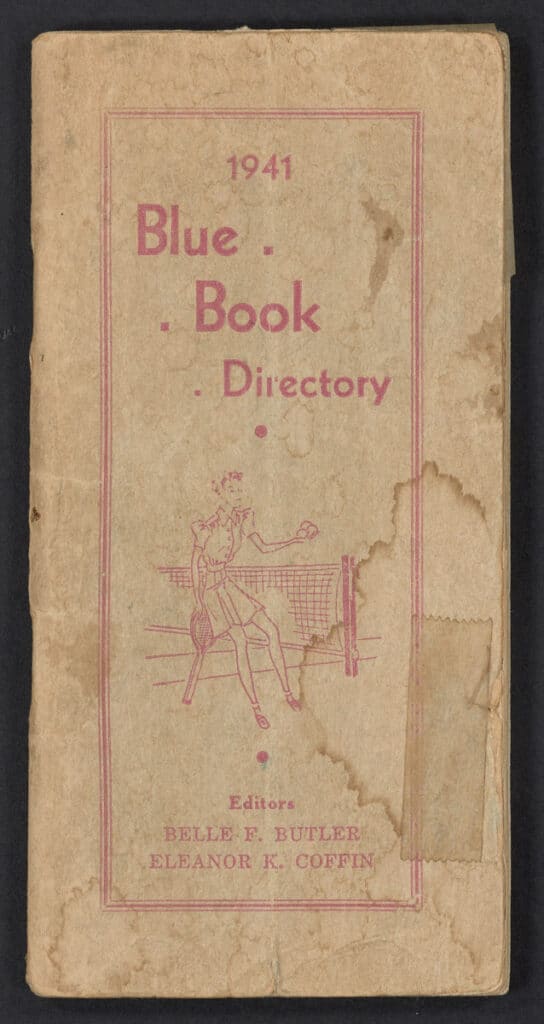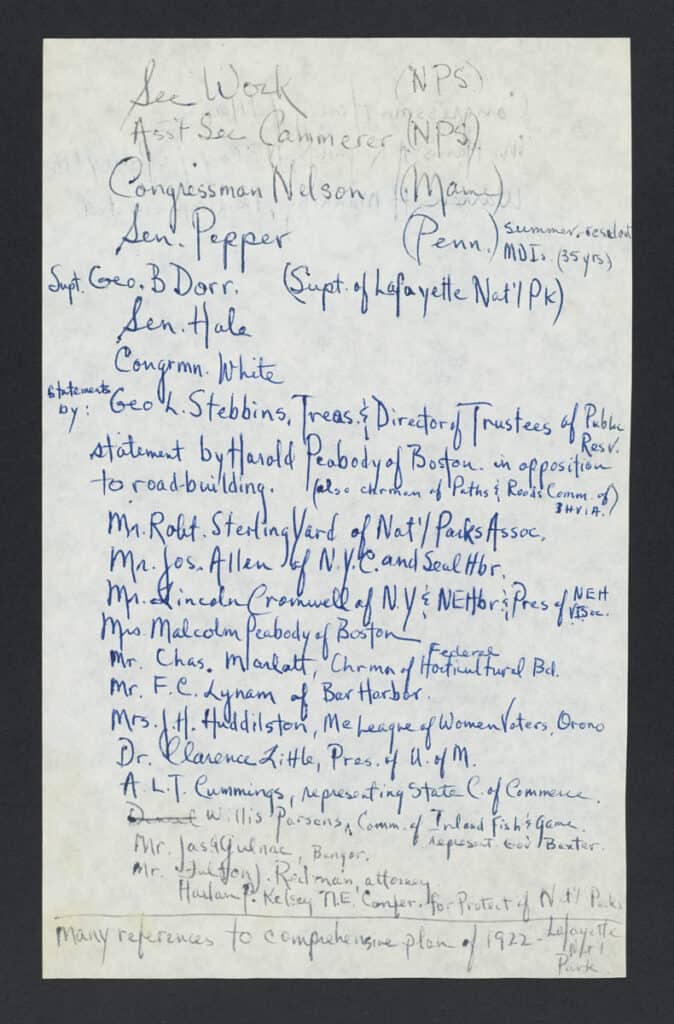During three decades of vacation visits to MDI, my wife and I heard many accepted origin stories about the forces that brought Acadia National Park into being. Unfortunately, the evidence proved to be incomplete and conflicted.
As this new century was born, I began my own historical research that took me from our National Archives in Washington, to a family country estate archive in Yorkshire England, to the public archive at Acadia National Park headquarters—and hundreds of other repositories. Of the myriad of holdings consulted, many hinted that local collections offered further evidence that might resolve troublesome historical issues or provide new directions of inquiry.
Two Discoveries

For example, in trying to amass a complete paper trail of the families and neighbors who resided near the Bar Harbor Oldfarm residence of park superintendent George Dorr, I was unable to locate on Mount Desert Island the Bar Harbor Blue Book for the early 1940s. I suspect that copies were then unprocessed for I am now able to retrieve a copy from the History Trust Digital Archive.
IMAGE: Butler, Belle F. and Coffin, Eleanor K., “Bar Harbor Blue Book Directory, 1941,” Bar Harbor Village Improvement Association, …view item

Similarly, in 1924 a local dispute regarding motor road development within the park escalated to a District of Columbia hearing before National Park Service Director Hubert Work. I suspected that there might be a handwritten list of proponents of road development that would add strength to my documentation. That record can now easily be found online in the History Trust archive. Why I was unable to locate it locally remains a mystery—being unprocessed is one feasible explanation.
IMAGE: “Lafayette National Park Road Construction Hearing Speakers List, undated,” Bar Harbor Village Improvement Association, …view item
“Undiscoverable” Resources
When researching the origins of the park, my inquiries about the depth and breadth of collections were more often than not unproductive. This occurred even when I provided evidence for why I suspected that a document was in an organization’s holdings (a 2018 report prepared for The History Trust documented the “undiscoverable” extent of these at-risk collections). As historians, we typically encounter dead ends and move forward to publish what is at hand—not what is out of reach.
Technological advancements in the last 30 years have vastly improved opportunities for accessing primary and secondary historical resources. Yet, historians are acutely aware that a backlog of potentially valuable unprocessed resources reside in both private and public collections. Once organized and processed, the backlogged content of these collections has the potential to revise our understanding of the past—in some cases it has turned upside down long accepted historical “facts.”
If adequately promoted to the profession, historians will use online resources of the History Trust since it was brought into being to “save the archives held by its member(s),” providing them with new stewardship tools to catalog, digitize, preserve, and promote their holdings both for their engaged constituencies as well as those far removed from Mount Desert.
~ Header Image: “Mr. Dorr’s Hill Side Cottage from the South,” Courtesy National Park Service, Acadia National Park, Herbert W. Gleason Glass Plate and Nitrate Negatives Collection.

